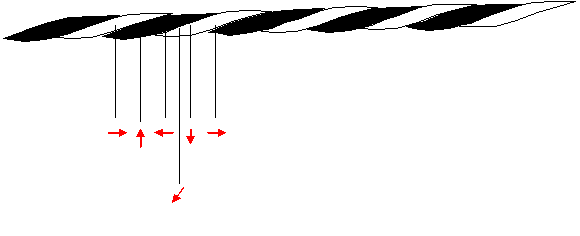Phase threads
It is useful to introduce one more concept, a modification of the corkscrew (wavefunction), which we can use to measure distances in a flexible way, especially in waves that get deflected or diffracted by lenses or atoms. Consider a piece of thread made up of two twines, one black and one white, as shown in the next figure:

Every time the white twine is fully exposed towards us, let the value of the electron wave be positive and purely real. From our definitions of complex vectors, that means the red value vector is pointing horizontally to the right. As we proceed along the thread, the angle (that is to say, 'the phase') of the red vector rotates around. We show four positions where it has progressed by ninety degrees, and one where is it at some other angle. In fact, along the length of the thread, the phase of the wave continuously increases, rotating around and around, coming back to where it started at every point where the thread is white. This is just like the corkscrew, but the thread analogy is useful because later we will bend threads around atoms and through lenses (something we cannot do with metal corkscrews!).



Copyright J M Rodenburg
|

